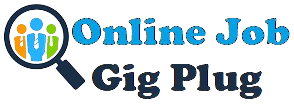104
Are staffing issues, employee turnover, or high labor costs draining your business?
Imagine running a business without a clear way to manage your employees. Without workforce management analytics, you never know how many employees will show up or when you’ll be short-staffed. Some days, you have too many people on duty, wasting money. On other days, you don’t have enough, causing stress, delays, and unhappy customers.
This happens everywhere—hospitals struggling with nurse shortages, call centers overwhelmed by unpredictable call volumes, retailers juggling seasonal demand, manufacturing plants dealing with workforce gaps, and hotels managing fluctuating guest bookings. Even banks, logistics companies, warehouses, and restaurants face similar challenges in balancing their workforce efficiently.
Without real-time workforce data and benchmarks, businesses face staffing challenges, increasing labor costs, and high employee turnover. These issues hurt customer service, reduce employee satisfaction, and lower profitability.
The solution? Workforce management analytics.
With predictive analytics, workforce planning dashboards and real-time data, businesses can boost employee productivity, reduce labor costs, and make better decisions.
Let’s explore how workforce management analytics works, why it matters, and how it can help support workforce initiatives that lead to a stronger, more efficient workforce.
Table of Contents
What is workforce management analytics?
Workforce management analytics helps companies improve human resources by using employee data, performance metrics, and smart technology to make better business decisions.It allows companies learn how to staff efficiently, improve employee engagement through employee surveys. And it gain actionable insights to keep operations running smoothly without wasting time or money.
But here’s the problem—over half of businesses aren’t using their workforce management data effectively.
According to a Deloitte survey, companies that don’t leverage analytics miss out on potential savings of up to 2.5% of their annual payroll costs.
Unlike HR analytics, which focuses on long-term planning and hiring strategies, a workforce analytics solution is all about real-time decision-making. It helps businesses optimize staffing, reduce turnover, and create better work schedules. This will ensure the right employees are in the right place at the right time.
Therefore, businesses can make smarter choices, increase employee productivity, and cut unnecessary labor costs when they are using predictive analytics and workforce planing dashboards. In short, workforce management analytics helps companies work smarter, not harder.
Why businesses invest in workforce analytics
Managing a workforce isn’t just about filling shifts—it’s about making sure talent management strategies place the right people in the right roles at the right time while keeping costs under control. Without workforce analytics, businesses often guess at staffing needs, leading to overstaffing (wasting money) or understaffing (causing stress and delays).
Workforce analytics helps companies achieve stronger business outcomes by:
- Optimize employee performance – Track productivity, identify top performers, and address skill gaps with real-time data.
- Reduce labor costs – Predictive analytics helps prevent unnecessary overtime, optimize scheduling, and lower payroll expenses.
- Enhance employee retention – Analyzing engagement and satisfaction trends allows businesses to address workplace issues before they lead to turnover.
- Improve workforce planning – Historical data and AI-driven insights help businesses hire smarter, attract top talent, avoid talent shortages, and align staffing with long-term goals.
- Maximize ROI – One of the key benefits of workforce analytics is improved operational efficiency, resulting in cost savings, higher productivity, and increased employee retention.
What are some types of workforce analytics?
Workforce analytics falls into five main types. As businesses enhance their data analysis capabilities, they progress through these stages:
1. Descriptive analytics – What happened?.
Descriptive analytics tracks past workforce data to identify trends and patterns. Employers use it to monitor key metrics like turnover rates, attendance, and productivity.
2. Diagnostic analytics – Why did it happen?
This type digs deeper into workforce data to uncover root causes. It helps businesses understand why trends are occurring, such as why turnover is increasing or why certain teams are more productive.
3. Predictive analytics – What will happen?
Using historical data and AI, predictive analytics forecasts workforce trends, such as future staffing needs, turnover risks, or labor costs, allowing businesses to adjust their workflows accordingly.
4. Prescriptive analytics – What should we do?
Prescriptive analytics provides actionable recommendations to optimize workforce decisions, including improving talent acquisition strategies, reducing costs, and boosting employee engagement.
5. Real-time analytics – What’s happening now?
This type provides live workforce data, helping managers track employee performance, attendance, and productivity in real-time to make immediate adjustments.
Who uses workforce management analytics?
Workforce analytics helps businesses optimize staffing, improve efficiency, and cut costs across various industries and roles.
Industries That Benefit
- Retail and E-commerce – Ensures the right staff levels for customer demand, reducing overtime and improving service.
- Healthcare – Prevents staff shortages, reduces burnout, and enhances patient care while ensuring compliance.
- Call centers – Optimizes agent scheduling, reduces wait times and tracks performance to improve retention.
- Manufacturing – Balances shifts, monitors productivity, prevents skill gaps, and ensures safety compliance.
- Finance and banking – Track remote work productivity, optimizes staffing costs, and ensures regulatory compliance.
Key roles that use workforce analytics
- HR professionals – Improve hiring, track engagement, and reduce turnover.
- Operations managers – Optimize schedules, reduce labor costs, and improve team performance.
- Finance leaders – Monitor labor expenses, forecast payroll, and maximize workforce productivity.
- Team leaders and supervisors – Track performance, identify skill gaps, and ensure fair workloads.
- Business owners and executives – Use people data to align staffing with growth, improve efficiency, and maximize ROI.
Workforce management challenges (and how analytics solves them)
Many businesses face common workforce challenges like high employee turnover, inefficient staffing, and rising labor costs. These issues can lead to burnout, lost productivity, and unnecessary expenses.
The good news? Workforce analytics offers data-driven solutions to tackle these problems head-on.
Here’s a look at some key challenges and how workforce analytics helps solve them:
| Challenge | How workforce analytics help |
| High employee turnover | Tracks turnover rates, identify reasons, and improves employee engagement through predictive analytics. |
| Poor workforce planning | It uses historical data and machine learning to anticipate hiring needs, skill shortages, and seasonal demands. |
| Unbalanced workloads | Helps managers optimize shift scheduling, prevent burnout, and track workforce performance. |
| Rising labor costs | Provides real-time dashboards to monitor employee productivity, reduce inefficiencies, and optimize payroll spending. |
| Low employee productivity | Identifies performance trends, tracks KPIs, and recommends training to improve workforce efficiency. |
| Scheduling conflicts | Uses AI-driven workforce management tools to create optimized work schedules that reduce shift overlaps and last-minute changes. |
| Compliance and labor law violations | Ensures adherence to labor laws, overtime regulations, and company policies through automated tracking and reporting. |
| Lack of workforce visibility | Provides real-time workforce insights with dashboards to monitor attendance, engagement, and performance in one place. |
| Overtime mismanagement | Forecasts peak work periods and automates scheduling to minimize excessive overtime costs. |
| Workforce shortages | Predicts staffing shortages and suggests proactive hiring or shift adjustments to maintain smooth operations. |
| Remote and hybrid work challenges | Tracks remote work productivity, engagement, and attendance to ensure accountability and efficiency. |
| Employee burnout and well-being | Analyzes workload distribution, identifies signs of burnout, and suggests interventions to maintain employee morale. |
| Skills gaps in workforce | Maps employee skills, track competency levels, and recommends targeted training programs for upskilling. |
| Difficulty in talent retention | Uses data-driven insights to improve work culture, benefits, and employee satisfaction to reduce attrition. |
| Operational inefficiencies | Streamlines workforce processes reduces redundant tasks, and improves team collaboration with automation. |
Choosing the right workforce analytics software can make or break your workforce strategy.
What to look for in a workforce analytics platform
- Real-time data collection – Enables accurate workforce planning and immediate insights into staffing needs.
- Machine learning capabilities – Predicts turnover, identifies workforce trends, and optimizes staffing levels.
- Workforce management dashboards – Provides easy-to-understand visualizations of workforce trends, employee performance, and key metrics.
- HR data integration – Aligns workforce analytics with broader HR goals, including hiring, engagement, and retention.
- Predictive analytics – Forecasts workforce demands, talent shortages, and future staffing needs to prevent inefficiencies.
- Automated scheduling and shift optimization – Ensures the right employees are scheduled at the right times to prevent overstaffing or shortages.
- Employee productivity tracking – Monitors work habits, engagement levels, and task completion rates to identify performance trends.
- Turnover and retention analysis – Identifies factors contributing to employee attrition and suggests strategies to improve retention.
- Compliance and labor law tracking – Ensures adherence to wage laws, overtime regulations, and labor policies to avoid violations.
- Integration with payroll and HRIS systems – Seamlessly connects with payroll, HR software, and workforce management tools for streamlined operations.
- Mobile accessibility and remote work support – Enables businesses to track workforce data from anywhere, which is essential for hybrid and remote teams.
- Employee engagement and feedback analysis – Uses AI-driven insights to monitor employee satisfaction and workplace sentiment.
- Task and performance management – Tracks employee workloads, project timelines, and efficiency to optimize team productivity.
- Cost analysis and budget forecasting – Helps businesses control labor costs, optimize budgets, and reduce unnecessary payroll expenses.
Popular workforce analytics tools
- Time Doctor – A workforce analytics tool that tracks employee productivity, time usage, and performance. It provides detailed reports, time tracking, and distraction monitoring, making it ideal for remote teams and businesses optimizing workforce efficiency.
- Workday – Provides HR analytics, human capital management (HCM) insights, and workforce planning tools.
- SAP successfactors – Offers workforce planning, predictive analytics, and employee performance tracking.
- UKG (Ultimate Kronos Group) – A workforce management solution with scheduling, labor analytics, and compliance tracking.
- ADP Workforce Now – Combines HR, payroll, and workforce analytics to help businesses optimize labor costs.
- Tableau – A powerful business intelligence tool that enables HR teams to visualize workforce data and trends.
- Visier – Specializes in people analytics, providing insights on retention, diversity, and workforce planning.
- Oracle – A comprehensive HCM platform with AI-driven workforce analytics for smarter HR decisions.
- BambooHR – Designed for small and medium-sized businesses, offering workforce reporting and employee insights.
- Zoho People – An HR software with workforce analytics for tracking performance, attendance, and engagement.
How to implement workforce management analytics successfully
Step-by-step guide:
Step 1: Define business goals – Align workforce analytics with key HR and business performance objectives.
Step 2: Collect and integrate workforce data – Use employee data, HR metrics, and demographics for insights.
Step 3: Choose the right workforce analytics software – Look for analytics tools with real-time dashboards.
Step 4: Train HR teams and decision-makers – Ensure HR professionals know how to use workforce analytics tools.
Step 5: Analyze and act on data – Use predictive analytics to streamline staffing and improve employee experience.
The future of workforce management analytics
Workforce analytics is no longer optional—it’s the key to staying competitive. As AI, machine learning, and automation continue to evolve, businesses that harness real-time workforce insights will optimize productivity, reduce labor costs, and improve employee satisfaction. The ability to predict staffing needs and adapt to changing demands is one of the key benefits of workforce analytics, setting successful companies apart.
Are you making decisions based on data or guesswork? Do you have the right tools to track productivity, prevent inefficiencies, and keep your workforce engaged? The future belongs to businesses that embrace smarter workforce management.
Time Doctor helps you gain real-time insights, eliminate wasted time, and make data-driven decisions—so your team works smarter, not harder.
Optimize your workforce with real-time insights.
Gain full visibility, boost accountability, and uncover hidden inefficiencies—no matter where your team works. Start making smarter workforce decisions with Time Doctor today!

Liam Martin is a serial entrepreneur, co-founder of Time Doctor, Staff.com, and the Running Remote Conference, and author of the Wall Street Journal bestseller, “Running Remote.” He advocates for remote work and helps businesses optimize their remote teams.


